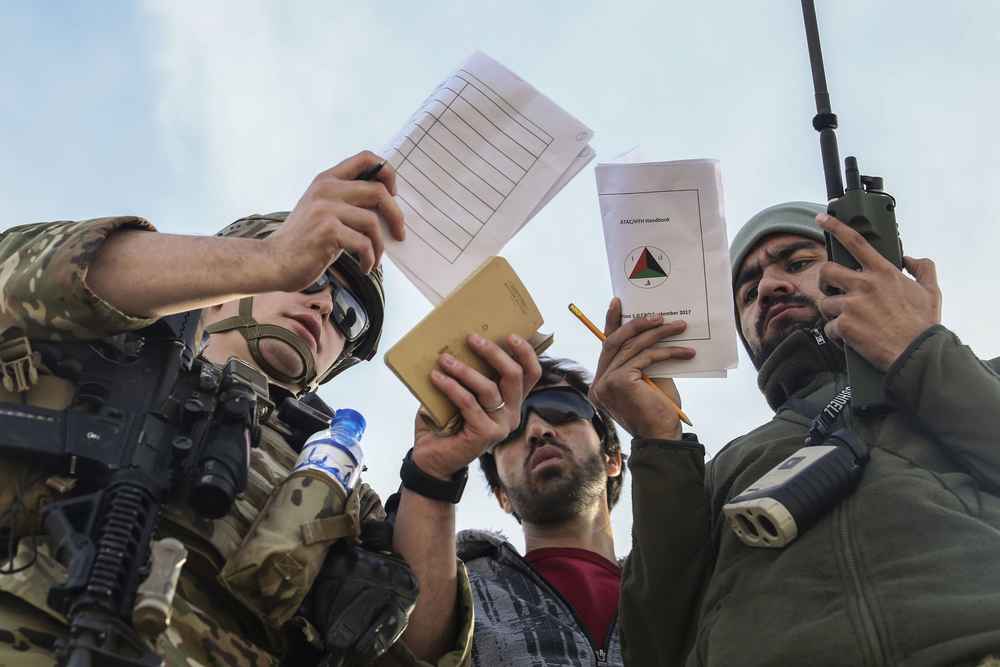General John Nicholson promised a “tidal wave of airpower” to defeat Taliban, ISIS and other insurgents in Afghanistan. He’s delivering. Weapons releases are up 300%, rising from 1337 in 2016 to 3,906 as of 30 Nov 2017. Coalition air forces led by the USAF are hitting Taliban drug processing labs in Helmand. Strikes are directed by controllers like those pictured here in a training photo from December 2017.
President Trump’s strategy applies tactics that succeeded in Mosul, Raqqa and across Iraq and Syria. US and Coalition advisers are assisting Afghan forces in combat. Another key is building up Afghanistan’s own air force to provide combat power and steady leadership. According to Secretary of Defense Mattis, the fight is Afghan-led. Intelligence collection and surveillance ramped up this year, leading to the Nov. 19, 2017 strike by F-22s, F-16s, B-52s and MQ-9 drones which took out Taliban narcotics labs, an IED facility and a command and control node.
And there’s no calendar, says Nicholson, the general from Baltimore County who is now an Army four-star and NATO’s top commander in Afghanistan. “This new campaign signals a shift to an approach guided by conditions on the ground instead of arbitrary timetables or “fighting seasons.” The new campaign will be "relentless and empowered by new authorities that allow the U.S. to aggressively take the fight to the enemy,” says Central Command Air Forces.
Forward operations demand C-130J cargo planes perform wet-wing defueling for helicopters and other aircraft taking the fight to the Taliban. The nimble C-130s fly to dirt-strip forward operating bases and other aircraft or trucks suck fuel directly from their wing tanks. In the past, only Special Operations forces relied on wet-wing defuel, but the demand for helicopter and fixed-wing fuel forward has grown. “In one week, we delivered 250,000 lbs. of fuel for a specific mission,” said Capt. Caitlin Curran, C-130 pilot and 774th EAS tactics officer in a Dec. 26, 2017 interview with CENTAF. Curran estimated wet-wing defueling has increased 350% over routine operations.
Mattis became a believer in airpower when then-Lt. Gen. Buzz Moseley, USAF, supported Brig. Gen. Mattis’ air assault with Marines on Kandahar airfield back in 2001. Now, as Secretary of Defense, Mattis is counting on Central Command airpower in his choice of tactics and strategy for Afghanistan.


